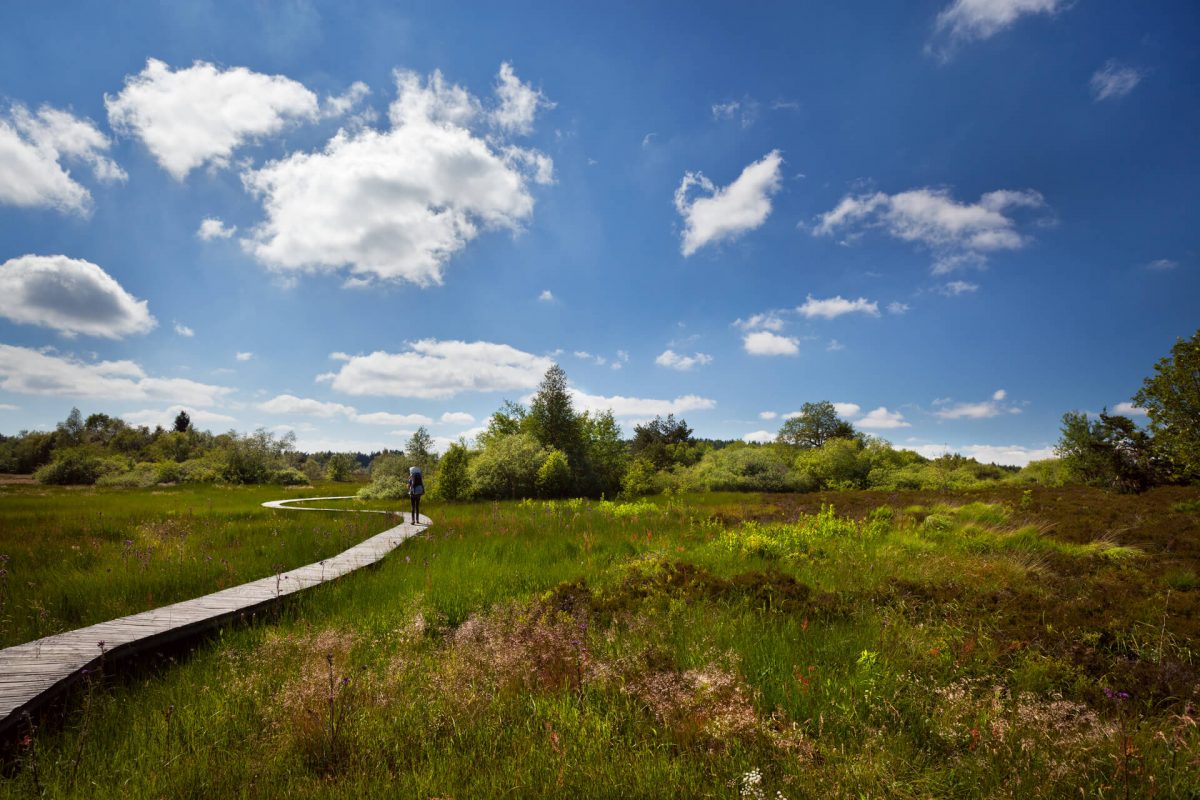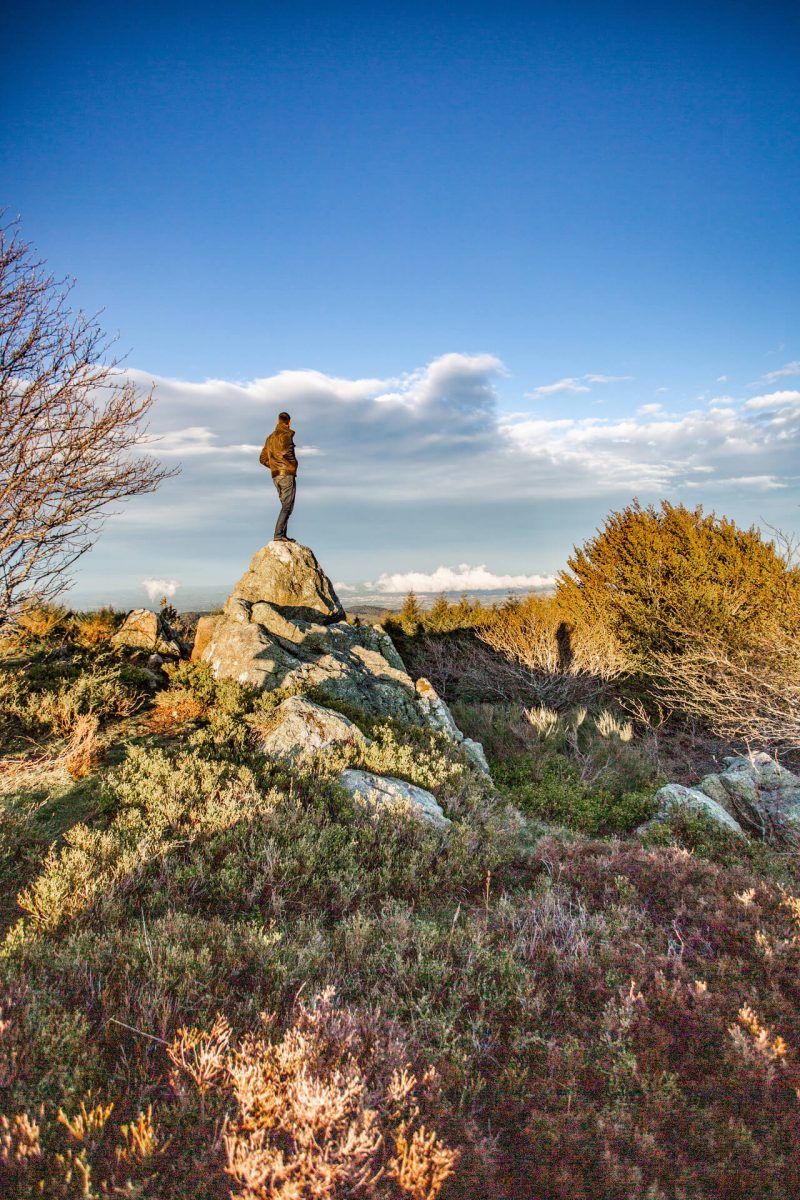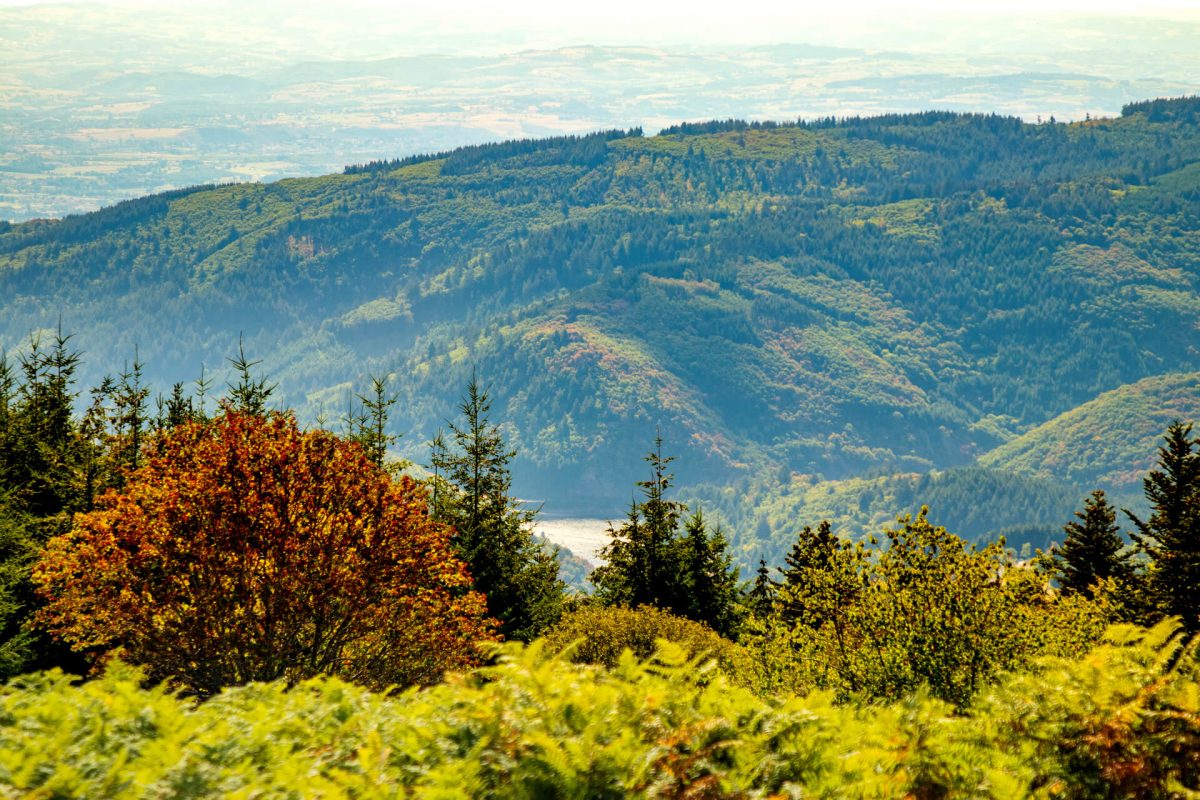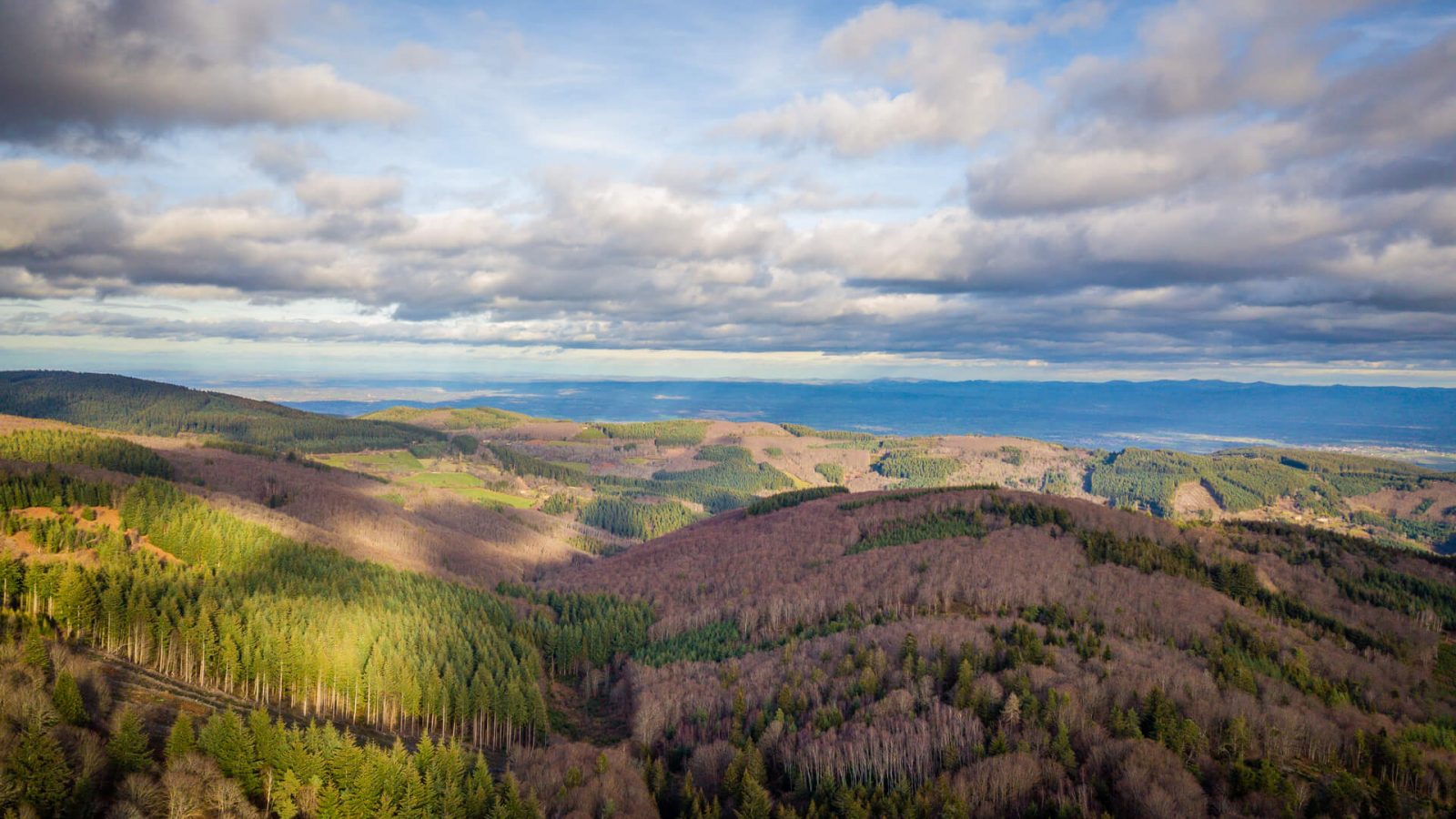A true paradise for many species, the plateau de la verrerie, surrounded by mountainous moors, offers magnificent views of the Roannais, the Alps and the Auvergne. In a very wild atmosphere, this unmissable natural place is on the border between the Allier and the Loire department.

A place accessible all year round
Since 2011, a summer pasture has been put in place on this protected natural site with herds grazing from May to October. The site remains accessible to all non-motorized hikers. Some rules must be respected, such as adapting your behavior to the animals present (cattle, sheep, goats, etc.) while respecting their tranquility, or closing the park gates.
The interpretive signage for natural environments will help you better understand why this plateau is a unique and preserved natural heritage. Follow the path and let yourself be guided by these signs.
Rhiking and mountain biking
This site offers suitable facilities (parking, educational panels and hiking trails) for discovery on foot, on horseback, by mountain bike or on snowshoes and skis in winter. Between Vichy and Roanne, 9 kilometers from Saint-Rirand, take the time for a soothing hike.
From May to October, the summer pasture is occupied by herds for its maintenance. Hikers are advised, please respect the fences and barriers and close the gates behind you. You wouldn't want to be responsible for a runaway sheep?
![Le plateau de la verrerie]()
The end of summer at the glassworks © Lionel Lambert / ADT42 ![Plateau de la verrerie sous la neige]()
Glassware in the snow © Guillaume Masseron / RT
The Plateau de la Verrerie is the last large open plateau of mountain heathland in the Monts de la Madeleine and the formation of the peat bog is dated - 4600 years ago.
Armelle Sicart-Bonnefoy

Breathtaking views
The wooden footbridge, fitted out on the plateau, will allow you to discover the peat bog and amazing landscapes. From the orientation table, near the Roc du Vacher, the view is breathtaking over the plain of Roanne, the Alps and the Puys range. You can also see the Loire Valley, the Forez plain and the Lyonnais mountains. If the good weather is with you, you can even catch a glimpse of the Mont Blanc massif.
Bloggers' words
“I chose a short hike that goes very well with a young child (Petite Oreille was approaching 2 years old at the time of our stay): the peat bogs of the Plateau de la Verrerie. To protect the very special ecosystem that is found here, a wooden walkway has been built, which makes walking both easy and fun for the little ones. The hike then continues on small trails, always marked. "
The glassware plateau, Natura 2000 site
East of the village of Saint-Nicolas-des-Biefs, the plateau de la verrerie is a site of European interest for its natural habitats, fauna and flora. Some date back to the Ice Age. This preserved and rich nature is, for many species, an exceptional habitat.
This plateau is characterized by typical mountain heathlands iridescent with pink hues at the end of summer, but also by the presence of a peat bog (wetland with an accumulation of organic matter), the living environment of the rare viviparous lizard or of a small carnivorous plant, the Round-leaved Drosera. Moreover, a pasture has been put back in place to restore these moorland and peatland environments.
A path winds and leads you through the mountain moors to reach the heart of the peat bog. Panels and an orientation table help you to decipher the landscapes and these environments, both rich and fragile.


DID YOU KNOW ?
The plateau bears the name of glassworks in reference to the glassmakers who came to settle in Saint-Nicolas-des-Biefs in the XNUMXth century.e century. At the time, the region had everything they needed: silica to make glass and forests to fuel the ovens. The activity of glassmakers flourished until the Revolution.
Key figures
- 60 hectares of which 40 hectares returned to pasture
- 1 030 meters above sea level
Remarkable flora and fauna
The mountain moors are home to a typical plant: Mountain Arnica. They also offer a magnificent playground for the very rare Saint-Martin Harrier and Cendré Harrier. The site is also frequented by the very pretty Northern Shrike.
As for it, the peat bog shelters very particular species adapted to this acid and humid environment. Thus, Common Frog and Viviparous Lizard occupy the area. In terms of flora, the small Round-leaved Drosera can be found in the areas at the edge of the slatted floor. In spring, the Cottongrass dress the bog with white pompoms accompanied by the pale pink flowers of the Bistorte Knotweed, host plant of our very rare endemic butterfly "the Bistort Copper".
And if you don't know all these species but your curiosity has been piqued, you can always request a visit to the Syndicat Mixte des Monts de la Madeleine.
![En balade sur le plateau de la verrerie]()
Strolling on the glassworks plateau © Lionel Lambert / ADT42 ![En balade sur le plateau de la verrerie]()
Strolling on the glassworks plateau © Lionel Lambert / ADT42
The history of the glassware plateau
Several centuries ago, this plateau was covered with beech groves. It was deforested by glassmakers from eastern France who used the wood to fuel their ovens. If you want to know more about the history of glassmakers, go to the glassmaker museum in Saint-Nicolas-des-Biefs. The glassmakers leave the territory because of the French Revolution. They leave behind a plateau, very quickly occupied by the peasants to graze their herds.
Closer to us after the rural exodus, the plateau is transformed into a leisure area (sand yachting, hikes of all types) but the natural environments are left a little abandoned.
In 2001, the plateau was classified as a site of Community interest (registered in the European Natura 2000 network). It was the subject of a Natura 2000 contract for the restoration of the moors and peat bogs from 2011. Thus, the plateau has again become a grazing area with a recovery in mountain summer in order to maintain the natural environments of the moors and the peat bog. .
Key dates
- In - 4600 years before JC: formation of the Verrerie peat bog.
- XVIe and XVIIthe centuries: occupation by glassmakers of the wooded plateau.
- XIXe and XXe centuries: agricultural and leisure use
- 1998 : installation of an interpretation circuit by the Loire department.
- 2001 : classification as a site of European interest (Natura 2000). The association for the creation of the PNR des Monts de la Madeleine (Syndicat Mixte des Monts de la Madeleine today) becomes the host of the Natura 2000 site.
- 2011 : resumption of grazing to maintain and preserve the moors within the framework of Natura 2000
- 2018 : renovation of the circuit interpreted by the Syndicat Mixte des Monts de la Madeleine within the framework of Natura 2000
PRACTICAL INFORMATION
The peat bogs of the Plateau de la Verrerie
Glassware plateau
42370
Saint-Rirand

Frederique's opinion
On the borders of the Loire and the Allier, this last large open plateau shelters a particular fauna and flora, rare and to be protected. Each season, it offers varied landscapes with changing colors. I like to walk there all year round.
Spring offers the tender greens of young shoots, the pale whites and pinks of bog flowers. From August to September it is the violet of the moors with callune which covers the whole of the plateau. And what about winter, when a thick blanket of snow decides to cover it in a few hours… Magical!












